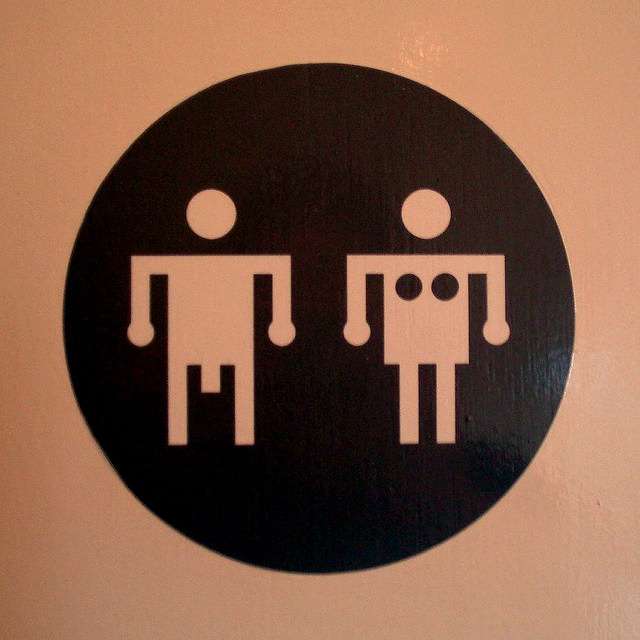Elizabeth Nolan Brown on Gender-Neutral Restroom Roadblocks

Public restrooms have not always been gender segregated. Historically, shared restrooms have been a feature of most communities, and this is still true in many countries today. In 1887, Massachusetts became the first state to pass a law requiring separate women's restrooms in the workplace. By the 1920s, most U.S. states had followed suit.
The problem, Elizabeth Nolan Brown writes, is that governments went beyond merely requiring all employees have a place to do their business and started specifying exactly how and in what ratios this must occur, in and out of the workplace. These days, America's public restrooms are regulated through state and municipal building codes that dictate exactly how many bathrooms buildings, businesses, and other public entities must provide, based on occupancy capacity. These codes also require the existence of separate men's and women's bathroom facilities. For advocates of unisex bathrooms, building codes—not bigotry—may be the biggest obstacle.




Hide Comments (0)
Editor's Note: As of February 29, 2024, commenting privileges on reason.com posts are limited to Reason Plus subscribers. Past commenters are grandfathered in for a temporary period. Subscribe here to preserve your ability to comment. Your Reason Plus subscription also gives you an ad-free version of reason.com, along with full access to the digital edition and archives of Reason magazine. We request that comments be civil and on-topic. We do not moderate or assume any responsibility for comments, which are owned by the readers who post them. Comments do not represent the views of reason.com or Reason Foundation. We reserve the right to delete any comment and ban commenters for any reason at any time. Comments may only be edited within 5 minutes of posting. Report abuses.
Please to post comments
Mute this user?
Ban this user?
Un-ban this user?
Nuke this user?
Un-nuke this user?
Flag this comment?
Un-flag this comment?